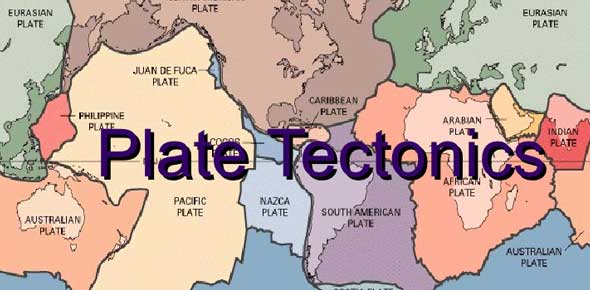Pangea, Plate Techtonics And Landforms

Questions and Answers
- 1.
What is the pacific plate called?
- A.
The pacific plate
- B.
The ring of fire
- C.
The african plate
- D.
The south american plate
Correct Answer
B. The ring of fireExplanation
The correct answer is "the ring of fire." The term "the ring of fire" refers to a major area in the basin of the Pacific Ocean where a large number of earthquakes and volcanic eruptions occur. It is called the ring of fire because it forms a roughly horseshoe-shaped ring around the Pacific Plate. This region is known for its intense seismic activity due to the movement and collision of several tectonic plates, including the Pacific Plate.Rate this question:
-
- 2.
When did pangea split apart
- A.
300 million years ago
- B.
400 million years ago
- C.
200 million years ago
Correct Answer
C. 200 million years agoExplanation
Pangea, the supercontinent that existed millions of years ago, split apart approximately 200 million years ago. This event, known as the breakup of Pangea, marked the beginning of the process of continental drift, where the continents gradually moved away from each other. The separation of Pangea led to the formation of the modern continents we see today and had significant geological and biological consequences, including the evolution and diversification of species.Rate this question:
-
- 3.
When plates slam together an earthquake and other natrual disasters happen?
- A.
True
- B.
False
Correct Answer
A. TrueExplanation
When plates in the Earth's crust collide, it causes immense pressure and stress to build up. Eventually, this pressure is released in the form of an earthquake. The collision of plates can also lead to other natural disasters such as volcanic eruptions, tsunamis, or landslides. Therefore, it is true that when plates slam together, earthquakes and other natural disasters occur.Rate this question:
-
- 4.
A valley with steep sides is called a...
- A.
Mesa
- B.
Canyon
- C.
Hill
Correct Answer
B. CanyonExplanation
A valley with steep sides is called a canyon. Canyons are formed by the erosion of the earth's surface, typically by a river or other water sources. The steep sides of a canyon are often characterized by rocky cliffs or walls, creating a dramatic and picturesque landscape. Canyons can be found in various parts of the world and are popular tourist destinations due to their unique geological formations and natural beauty.Rate this question:
-
- 5.
When 2 plates move apart they form a hurricane?
- A.
True
- B.
False
Correct Answer
B. FalseExplanation
The statement is incorrect. When two plates move apart, they do not form a hurricane. Plate tectonics is the theory that explains the movement of Earth's lithospheric plates. When plates move apart, it results in a process called seafloor spreading, where new crust is formed. A hurricane, on the other hand, is a tropical cyclone that forms over warm ocean waters. These two phenomena are unrelated and do not have a cause-and-effect relationship. Therefore, the correct answer is False.Rate this question:
-
- 6.
How much of the world do oceans take up?
- A.
60%
- B.
70%
- C.
20%
Correct Answer
B. 70%Explanation
Oceans cover approximately 70% of the Earth's surface. This is due to the vastness of the oceans, which include the Atlantic, Pacific, Indian, Southern, and Arctic Oceans. The large amount of water in these oceans contributes to their dominance in terms of surface area. The remaining 30% of the Earth's surface is composed of landmasses, including continents and islands.Rate this question:
-
Quiz Review Timeline +
Our quizzes are rigorously reviewed, monitored and continuously updated by our expert board to maintain accuracy, relevance, and timeliness.
-
Current Version
-
Mar 18, 2023Quiz Edited by
ProProfs Editorial Team -
Jan 05, 2012Quiz Created by
Tlifer
 Back to top
Back to top


